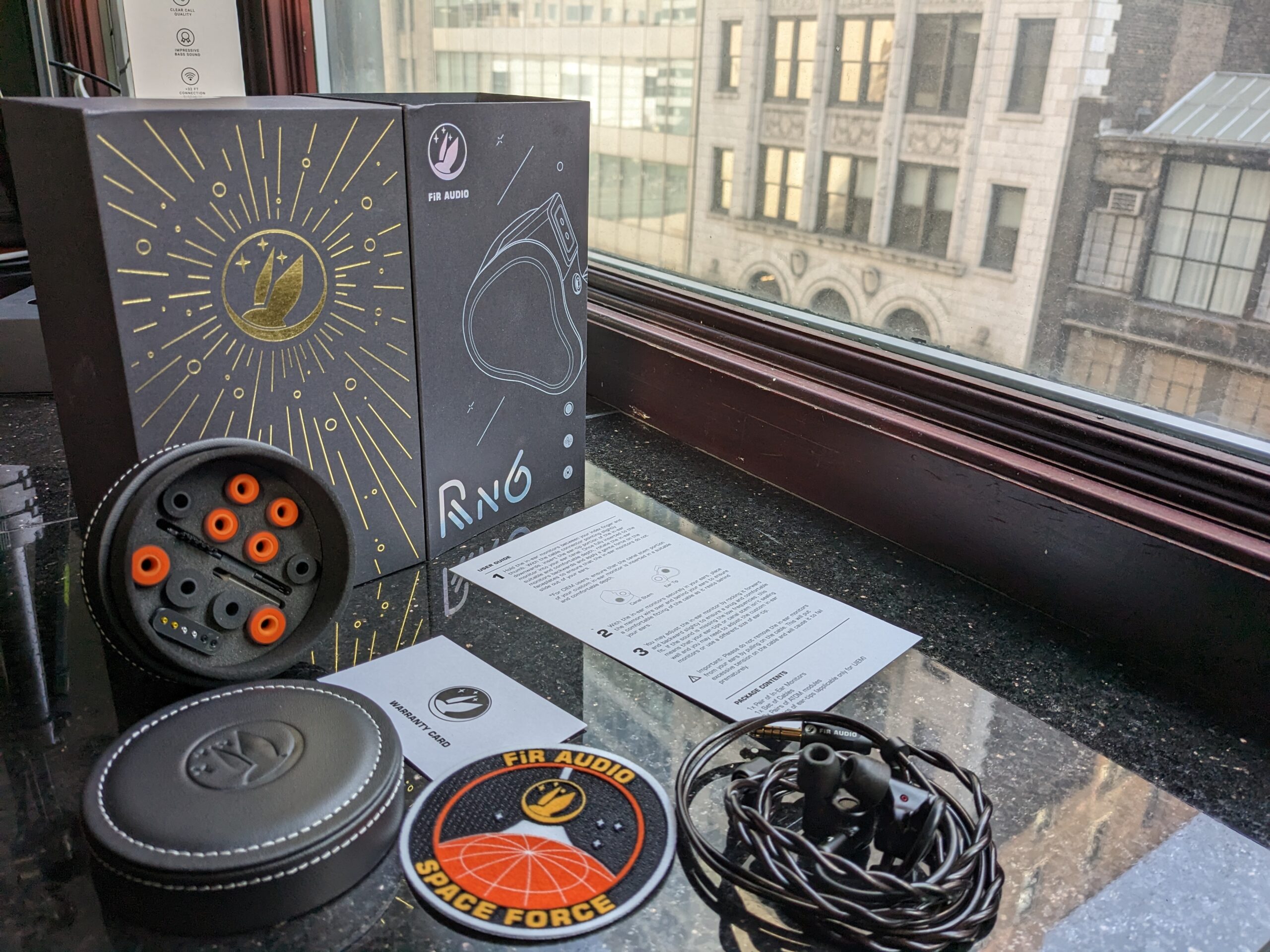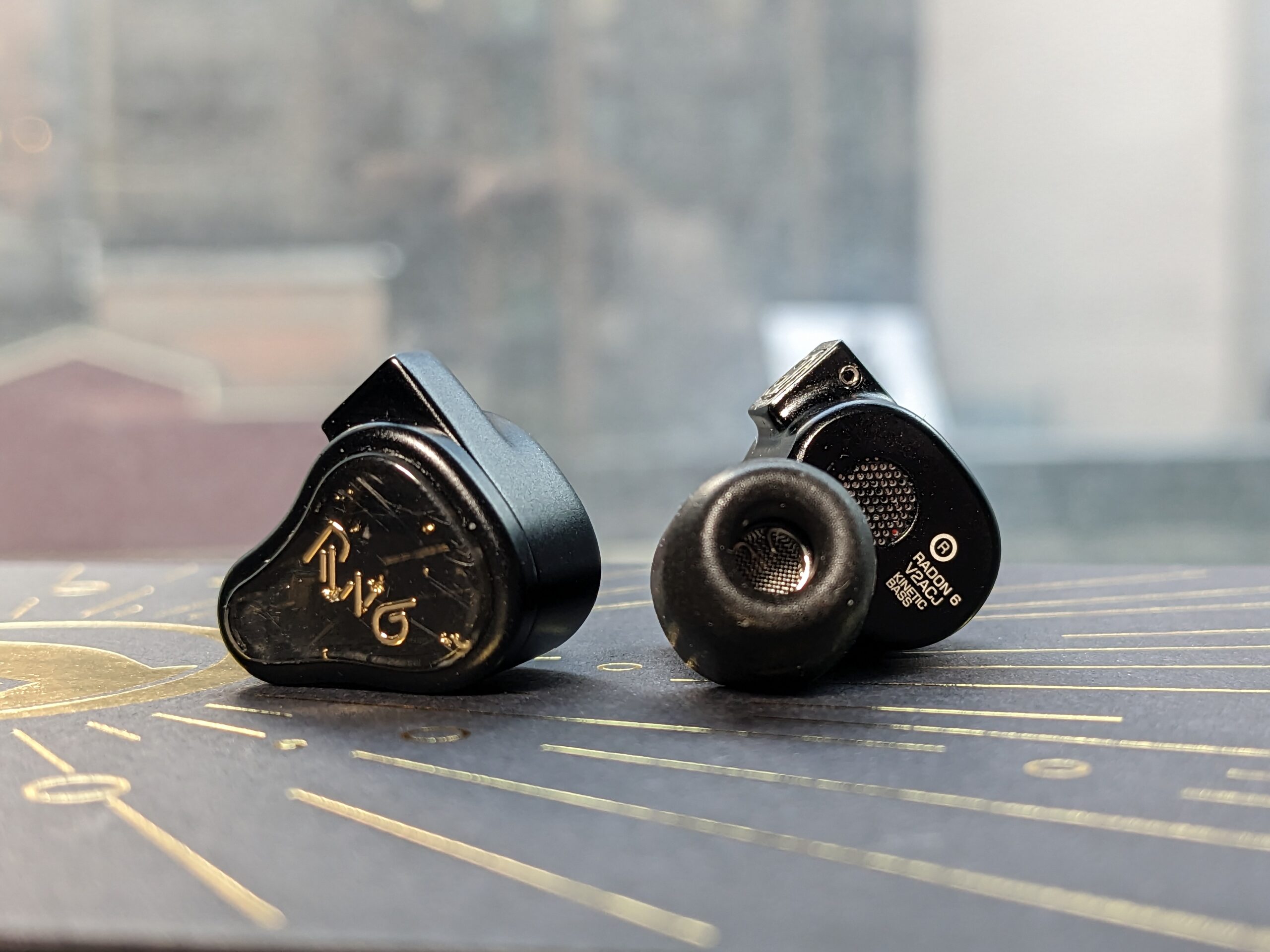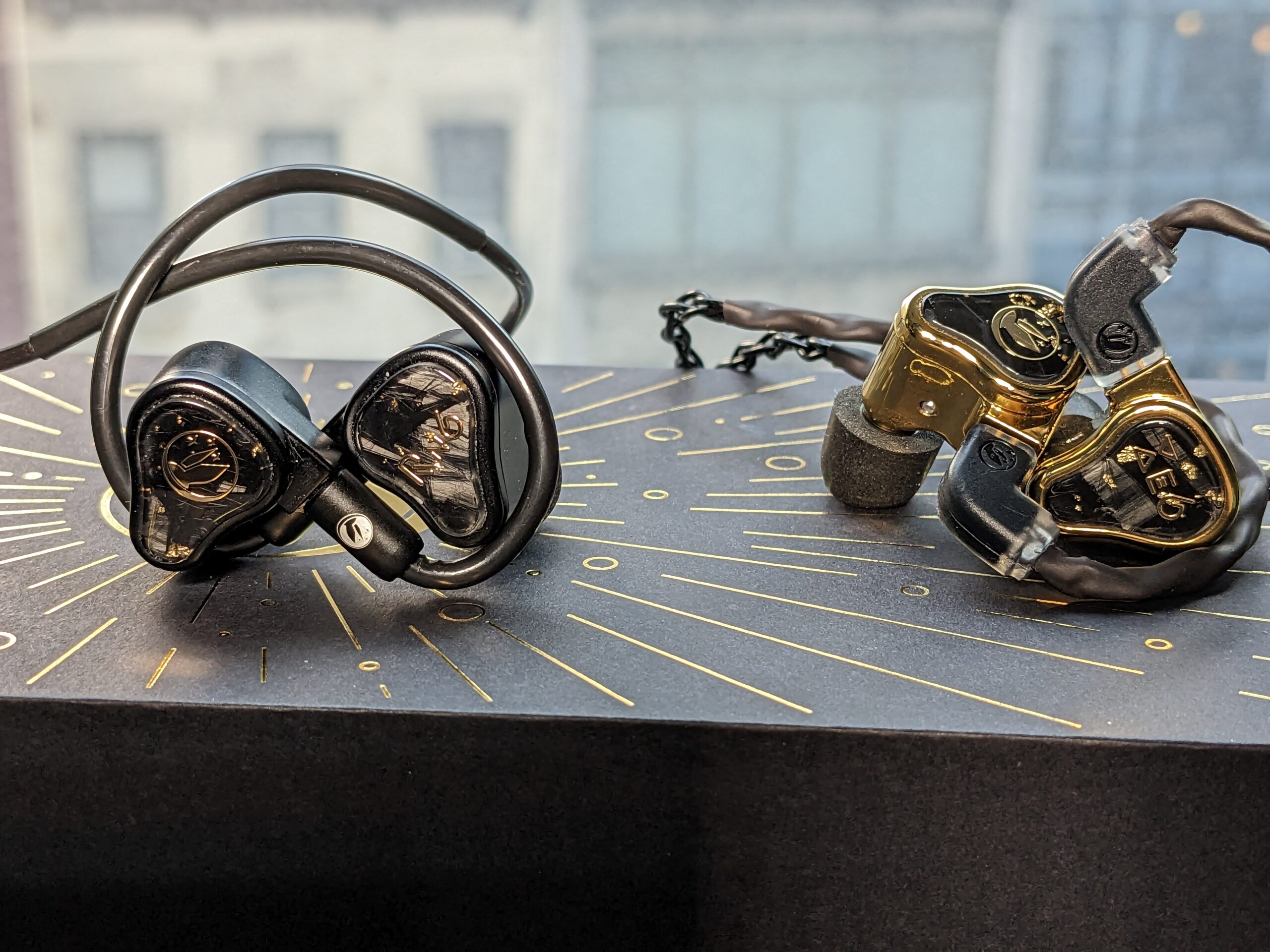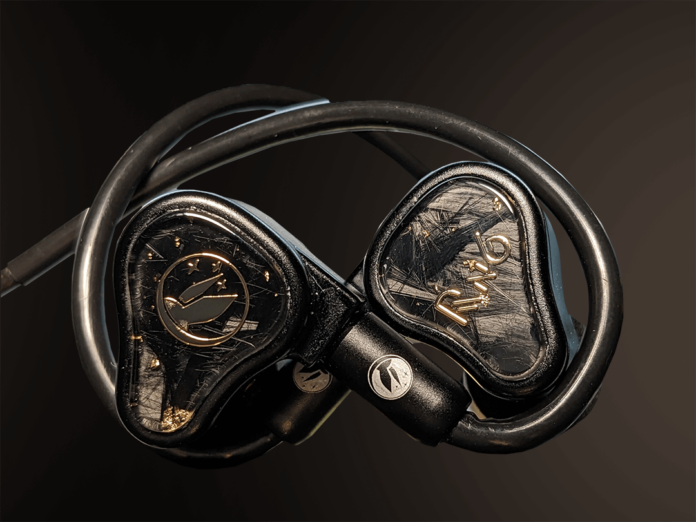FiR Audio Radon 6 Review
I still have Fir Audio’s Xenon 6 fresh in mind, and I’m looking forward to working my way through the top shelf of FiR’s catalog by now reviewing the Radon 6, a top-of-the-line limited edition release from the company to celebrate their five-year anniversary. Priced at $3299, the FiR Audio Radon 6 has nearly as much to prove for itself as the $3899 Xenon 6. I’ll be getting into its accessories, fit, physical and technical design, and most importantly, what the Radon 6 sounds like – and if it can back up its premium price tag.
What’s In the Box?

- FiR Audio Xenon 6 UIEMs
- Braided Black 1.2m IEM cable with 4.4mm jack
- Hard Leather Case
- 3 Pairs Silicone-Foam Hybrid Ear Tips
- 3 Pairs Foam Ear Tips
- ATOM XS Interchangeable Modules
- IEM Cleaning Tool
- ATOM Module Tool
- FiR Audio “Space Force” Patch
Physical Design
If you didn’t read my Xenon 6 review, here’s a little relevant background info: FiR Audio was founded in 2018 by Bogdan Belonozhko, a member of the family behind 64 Audio. While FiR is certainly doing an effective job carving a separate and distinct niche with their IEMs, there are some elements of 64 Audio that clearly carry over, particularly in the fit and accessories department.
The Radon 6 from FiR Audio possesses comfortably rounded edges that avoid straining a listener’s ear in the midst of its snug fit. We also see a well-insulated braided cable that forgoes the “L” shape on the 2 pin side of its connection like what we saw with the Xenon 6. The hard leather carrying case exhibits decorative white stitching, and a distinctive felt seal. The ear tip selection is thoughtfully curated, offering listener’s a choice between some particularly comfortable foam tips and, special to the Radon 6, Symbio silicon-foam hybrid tips.

I’m very happy with the clearly high quality accessories that come with FiR IEMs; all the bases are covered and I really have nothing to complain about. The fit is great as well, and I found I could set and forget them for hours of listening.
Much like the Xenon 6, the Radon 6 gets top marks for this section of the review. Everything comes across as equal parts easy and premium.
As for how the Radon 6 looks, take a look at the pictures and be your own judge. I personally appreciate an expensive IEM with a subtle look. You can get away with wearing the Radon 6 in public without drawing too much attention to yourself.
Technical Design
The primary design element we have to go over here is Kinetic Bass, something that appears to be unique to FiR IEMs. Kinetic bass functions somewhat similarly to other bone conduction drivers, but with some key differences. While the bone conduction we see in other high end IEM’s like Empire Ears’ Legend Evo targets the ossicles and inner ear bones, kinetic bass works by vibrating the pinnae and ear cartilage through a sizable vent on the chamber of the Radon 6. In theory, this should improve imaging and realism in the Radon 6’s lower frequencies.
Aside from kinetic bass, we also see a tubeless driver design. Special acoustic chambers are utilized instead so as to avoid issues with resonance that often arise from acoustic tubing. Venting has also been implemented for the specific purpose of reducing air pressure build up in a listener’s ear canals, which cuts back on potential fatigue that can arise after longer listening sessions. Finally, we see the inclusion of interchangeable ATOM modules that can be installed to make various adjustment’s to the FiR Radon 6’s balance.
| Spec | FiR Audio Radon 6 |
| Drivers | (1) 10mm Kinetic Bass DD
(2) OpenDriver BA’s for mid range (1) OpenDriver BA for high mids (1) OpenDriver BA w/ Sound Reflector for highs (1) OpenDriver EST for “ultra-highs” |
| Frequency Response | 20 Hz – 20 kHz |
| Impedance | 28 ohms |
Sound Stage
When I saw the Radon 6’s specs on paper, I was expecting something nearly identical to FiR Audio’s Xenon 6. Instead, I hear not only notable, but drastic differences in what the Radon 6 sounds like. This goes for its sound stage as much as its tuning.
While the Xenon 6 was insular with a vivid internal 3D character, the Radon 6 is expansive and pushes its image well beyond the shells of the IEMs. Beyond its impressive width and depth, I found the Radon 6 had a propensity for tucking parts behind my ears as well. The dynamic bass also seemed a bit more noticeable than it was with the X6, bringing a greater awareness to the bass vibrations that would flutter across my outer ear. I’m also struck by the seamless fluidity between left and right channels, which gives pans a phantom, felt-on-the-face quality.
While I respected the Xenon 6 for its creative and unconventional qualities, such as it’s in-head oriented imaging, I find a satisfaction in the more conventionally impressive imaging and staging in the Radon 6.

Lows
Like seemingly all things FiR, the Radon 6 is defined by its loud and lush bass response. While sub, mid, and high bass alike find a heavy presence in the overall balance, high bass seems a bit more tapered and controlled than it was in the Xenon 6. To my ears, this is a difference for the better. The Xenon 6 could lose low end articulation with tracks that were too dense in their lows, which puts it in a somewhat artsy niche of being a super bassy IEM that isn’t quite cut out for electronic mixes. While the low end on the Radon 6 is still one of the most bombastic of any I’ve heard from an IEM in this price range, it’s tighter and more articulate, and can skillfully handle the throbbing electronic tracks that listeners will almost certainly feel compelled to throw at it.
While high bass may be less amplified than what was heard on the Xenon 6, it nonetheless finds significant amplification that imparts a low end warmth. Subs are quick to rumble, and when they do, the dynamic bass kicks into action with an almost intoxicating vibratory effect that I felt across my entire head. However, the most prominent part of the Radon 6’s low end balance is found in the mid bass. There’s a heavy and tight slam here that was constantly slapping me in the middle of my forehead. While the Xenon 6 possessed a similarly aggressive slam, the more controlled and nuanced low end on the Radon 6 made it feel faster and more impactful.
Mids
Like the Xenon 6, FiR Audio’s Radon 6 features a V-shaped mids balance, but there are a few key differences. While the Xenon 6 was V-shaped with an emphasis in its low mids, there’s a greater high mid presence in the Radon 6 that gives vocals a more driving character than the softer tone heard in the Xenon. The lighter low mid emphasis along with the attenuated high bass serves to create a more articulate separation between the mid range and low end, with less bloom and resonance in the 200 -400 Hz range than the Xenon 6.
Though there’s increased clarity in this mid range, it still comes across a bit quiet relative to the low end. Fleet Foxes tracks suddenly found prominence in their bass parts that sometimes overshadowed the strumming acoustic guitars that normally drive their tracks. While this prevents FiR’s Radon 6 from being a truly eclectic IEM, I don’t think that’s the angle that it’s trying to play. It’s unapologetically pointing listener’s to its low end, but giving them just enough mid range information, particularly high mid lift and clarity, to stop the entire signature from being swallowed in its bass.
Highs
There’s considerable extension in the Radon 6’s treble, though perhaps less than what was heard in the Xenon 6. Cymbal transients don’t have the same tappy intensity, and the upper harmonic character of parts like snare drums and vocal reverbs don’t cut through mixes with as much prominence. However, I don’t want to mislead you by only talking about this treble relative to the Xenon 6: the Radon 6 still packs significantly more treble than your average IEM, but its focus seems to be in low and mid treble rather than in mid and high treble like the Xenon. While this tuning difference leaves me preferring the fast sparkle I heard on the Xenon, I think I understand the logic here: the Xenon 6 relies almost entirely on treble for a lift in the midst of its heavy bass and darker mids, while the Radon 6 finds lifting qualities in its high mids and thus puts a bit less stock in its upper treble.
Overall

After now trying FiR’s top of the line models, I feel confident in saying that FiR is doing some weird stuff, and I like it. There’s something artistic about their bass-focused balance that seems more nuanced than the pure energy and excitement you might get from Empire Ears IEMs, for example. I’m also highly impressed with the dynamic bass vent, which I became increasingly aware of the more I listened.
I ended my Xenon 6 review by saying that it may be worthy of its lavish price tag, but wouldn’t necessarily recommend it as somebody’s first-ever high-end IEM due to some of its more niche qualities. But…the Radon 6? I think FiR is hitting their stride here, including enough unique traits from the Xenon but with some tweaks that make them a bit more accessibly enjoyable. FiR Audio’s Radon 6 could be very good choice for someone’s first premium in-ear monitor – just make sure you love bass above all else before pulling the trigger on them.
You can purchase the FiR Audio Radon 6 here, or the FiR Audio Xenon 6 here, from Audio46.
Compare the ranking of various headphones, earbuds and in-ear monitors using our tools.
Discuss this, and much more, over on our forum.
---MAJORHIFI may receive commissions from retail offers.














